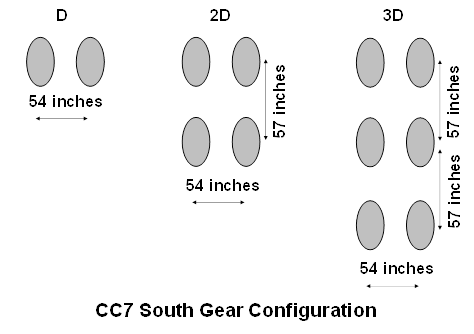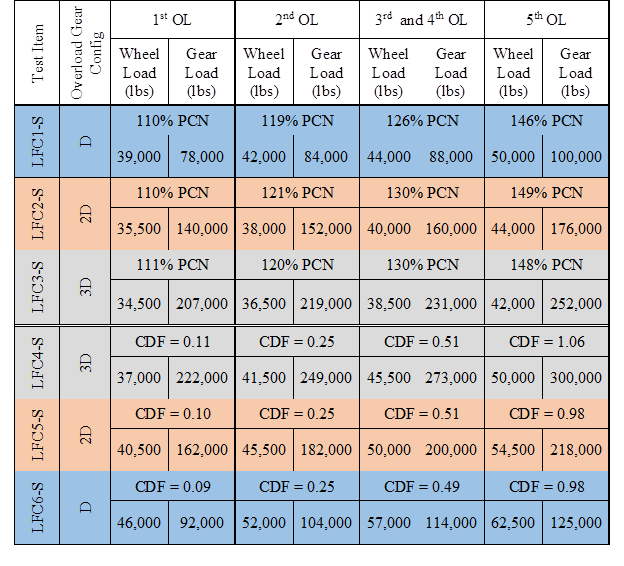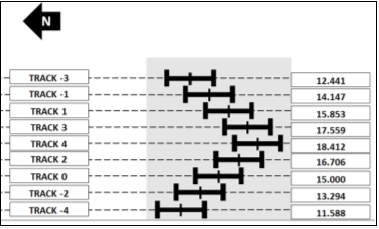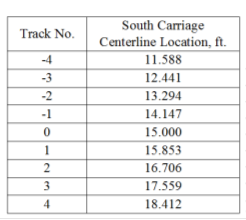CC7 South Gear Configuration
The NAPTF test vehicle (NAPTV) consists of two carriages, a north carriage and a south carriage, each of which can be configured using up to 9 wheels. To meet the research objective, different gear configurations were used in the traffic test, as shown in the figure below. The dimensions of the load configurations are also illustrated in the figure below. The dual spacing was 54 inches and the tandem spacing was 57 inches.

CC7 South Wheel Load/Tire Pressure
The traffic testing included a combination of normal load (1D gear at 36,000 lbs. per wheel) and overloads at 2.5 mph. The table shown below summarizes the wheel load and sequence of overload trafficking. The nominal tire inflation pressure for all load levels was 200 psi, although actual tire pressures varied slightly with the traffic conditions during testing.
CC7 South Overload Wheel Load and Sequence

CC7 South Wander Pattern
The NAPTV simulates a normal distribution of aircraft traffic during traffic testing. The wander pattern used for the traffic testing consists of 66 vehicle passes, arranged in 9 wander positions. The figure shown below indicates the CC7 South wander positions. Offsets from the centerline are given in feet. Note that the offset dimension refers to the distance to the center of the load module, which is midway between the wheels. This figure should be used as reference to the track numbers indicated in the database.

CC7 Wander Positions

CC7 Wander Position Table
To download the entire wander table as used on the NAPTV, click here.
Return to Construction Cycle 7 Overview